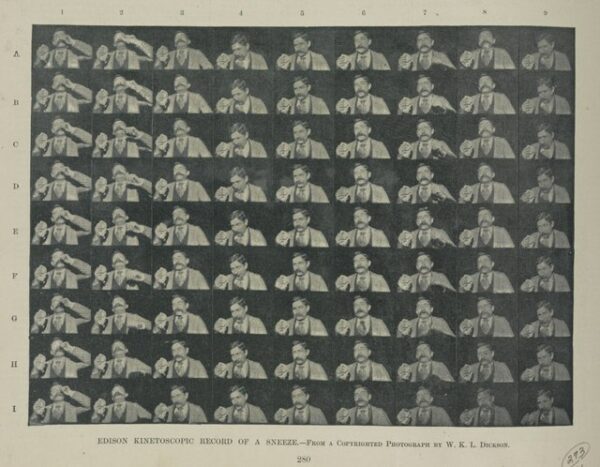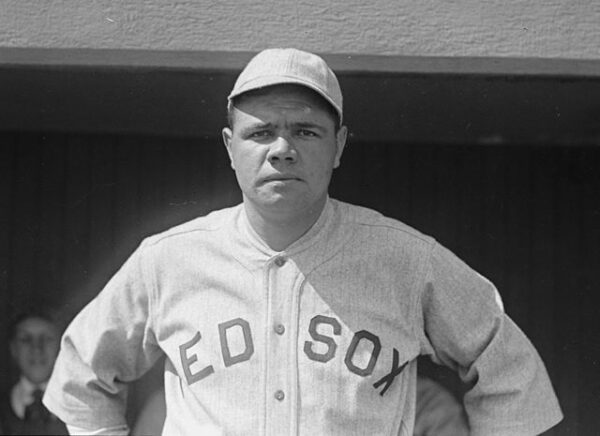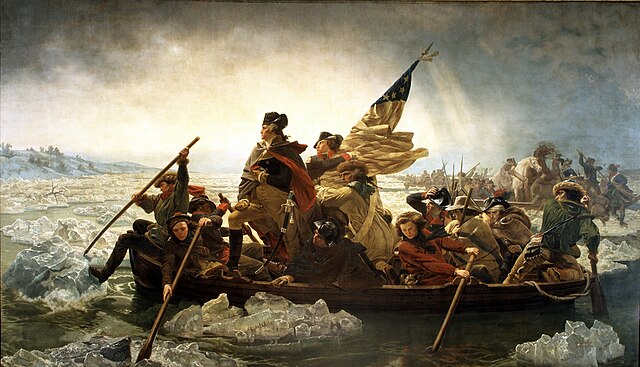One of the most famous early motion pictures produced by Thomas Edison’s company was a short film titled “Fred Ott’s Sneeze,” also known as “The Sneeze” or “Edison Kinetoscopic Record of a Sneeze.” This film, which lasts only a few seconds, captures an employee of Edison’s, Fred Ott, taking a pinch of snuff and then sneezing. It was created on January 7, 1894, and is notable for being one of the earliest examples of a kinetoscopic film and for its use in promoting the Kinetoscope.
The idea behind “Fred Ott’s Sneeze” was to showcase the capabilities of the Kinetoscope and to produce a film that was both entertaining and suitable for the brief viewing experience the device offered. The film was shot using the Kinetograph, the motion picture camera developed by William Kennedy Laurie Dickson under Edison’s supervision. The Kinetograph was capable of capturing a series of quick, sequential images on a strip of film, which could then be viewed in rapid succession through the Kinetoscope to create the illusion of motion.
To add to the film’s appeal, Edison’s team decided to record a commonplace yet visually interesting event—a sneeze. Fred Ott, who worked as an assistant in Edison’s laboratory, was known for his humorous personality and was chosen as the subject. The film not only captured his sneeze but also his comical preparations, including his exaggerated facial expressions as he inhaled the snuff. The short film was intended to be humorous and relatable, and it succeeded in engaging audiences with its simple yet effective subject matter.
“Fred Ott’s Sneeze” was also significant because it was one of the first films to be copyrighted. Edison filed for a copyright on the film in 1894, with the Library of Congress, under the title “Edison Kinetoscopic Record of a Sneeze.” This act of copyrighting a motion picture was part of Edison’s broader strategy to protect his intellectual property rights in the realm of cinema. The copyright registration listed the film as a series of photographs, which highlighted the novelty of motion pictures at the time and the lack of established legal frameworks for the new medium.
The film became a popular attraction in Kinetoscope parlors, where people would pay to watch short films through the peephole viewer. “Fred Ott’s Sneeze” was not only a demonstration of the Kinetoscope’s potential but also an early example of how film could capture and immortalize a fleeting moment in time. It remains an iconic piece of cinema history and a testament to Edison’s role in the development of the film industry. The sneeze, captured over a century ago, continues to be viewed and enjoyed, illustrating the enduring power of even the simplest motion pictures.






